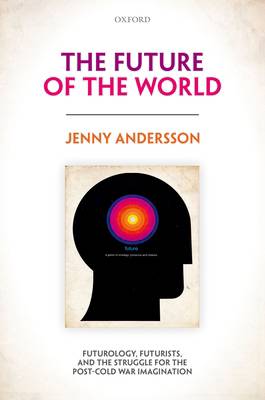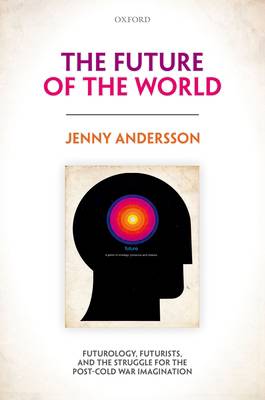
- Retrait gratuit dans votre magasin Club
- 7.000.000 titres dans notre catalogue
- Payer en toute sécurité
- Toujours un magasin près de chez vous
- Retrait gratuit dans votre magasin Club
- 7.000.0000 titres dans notre catalogue
- Payer en toute sécurité
- Toujours un magasin près de chez vous
The Future of the World
Futurology, Futurists, and the Struggle for the Post Cold War Imagination
Jenny Andersson
Livre relié | Anglais
125,45 €
+ 250 points
Description
The Future of the World is devoted to the intriguing field of study which emerged after World War Two, futurism or futurology. Jenny Andersson explains how futurist scholars and researchers imagined the Cold War and post Cold War world and the tools and methods they would use to influence and change that world. Futurists were a motley crew of Cold War warriors, nuclear scientists, journalists, and peace activists. Some argued it should be a closed sphere of science defined by delimited probabilities. They were challenged by alternative notions of the future as a potentially open realm. Futurism also drew on an eclectic range of repertoires, some of which were deduced from positivist social science, mathematics, and nuclear physics, and some of which sprung from alternative forms of knowledge in science fiction, journalism, or religion. These different forms of prediction laid very different claims to how accurately futures could be known, and what kind of control could be exerted over what was yet to come. The Future of the World carefully examines these different engagements with the future, and inscribes them in the intellectual history of the post war period. Using unexplored archival collections, The Future of the World reconstructs the Cold War networks of futurologists and futurists.
Spécifications
Parties prenantes
- Auteur(s) :
- Editeur:
Contenu
- Nombre de pages :
- 288
- Langue:
- Anglais
Caractéristiques
- EAN:
- 9780198814337
- Date de parution :
- 16-10-18
- Format:
- Livre relié
- Format numérique:
- Genaaid
- Dimensions :
- 236 mm x 157 mm
- Poids :
- 598 g

Les avis
Nous publions uniquement les avis qui respectent les conditions requises. Consultez nos conditions pour les avis.






